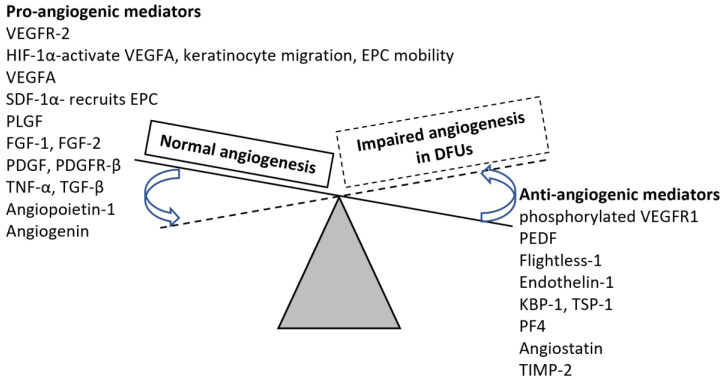Figure 2.
Change in the expression levels of pro-and anti-angiogenic factors in chronic nonhealing diabetes foot ulcers. Normal angiogenesis occurs with increased expression of proangiogenic and decreased expression of antiangiogenic mediators. The expression of proangiogenic factors decreases while antiangiogenic mediators increase in nonhealing diabetic foot ulcers. Vascular endothelial growth factor receptor (VEGFR)-2, hypoxia-inducible factor 1-alpha (HIF-1α), vascular endothelial growth factor (VEGF)-A, stromal cell-derived factor (SDF)-1α, placental growth factor (PLGF)—a member of the VEGF family, fibroblast growth factor (FGF), platelet-derived growth factor (PDGF), platelet-derived growth factor receptor (PDGFR)-β, tumor necrosis factor (TNF)-α, transforming growth factor (TGF)-β, pigment epithelium-derived factor (PEDF), Krüppel binding protein (KBP)-1, thrombospondin (TSP)-1, platelet factor (PF)-4, and tissue inhibitors of matrix metalloproteinases (TIMPs). The continuous line shows the expression levels during normal wound healing while the dotted line and arrows represent the shift in expression levels.

